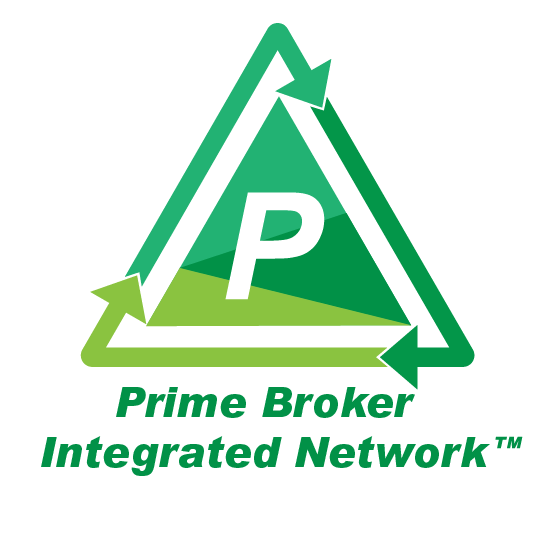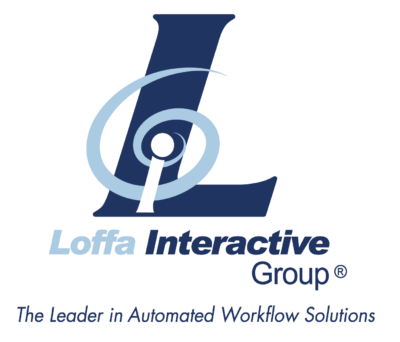 In the intricate ecosystem of prime brokerage, the finesse lies in juggling legal documents to keep the operational gears running smoothly while staying within the regulatory lines. A central player in this balancing act is the Form 1 Schedule A (F1SA). It’s not just a form; it’s the blueprint of the relationship between the prime broker and their client.
In the intricate ecosystem of prime brokerage, the finesse lies in juggling legal documents to keep the operational gears running smoothly while staying within the regulatory lines. A central player in this balancing act is the Form 1 Schedule A (F1SA). It’s not just a form; it’s the blueprint of the relationship between the prime broker and their client.
The Significance of F1SA’s
F1SA’s are the cornerstone, laying out the scope of services, fees, margin lending terms, and custody of assets. They’re the scriptures that both the prime broker and the client turn to, for understanding their rights and obligations.
Why F1SA’s Matter:
- Services and Fees: Clearly spells out what the client gets and at what cost.
- Margin Lending and Asset Custody: Details the terms, safeguarding both parties in these critical operations.
Upholding Regulatory Compliance
The shadow of regulation looms large over prime brokers. With bodies like the SEC and FINRA watching, slipping up on maintaining accurate and complete records of F1SA’s isn’t an option—it’s a regulatory mandate, with penalties waiting at the other end for any missteps.
Streamlining the F1SA Management
The complex dance of managing F1SA’s is seeing a tech evolution, with platforms like Loffa Interactive Group’s Prime Broker Interactive Network (PBIN) stepping into the spotlight. These solutions offer a one-stop platform for not just F1SA’s but also related documents, bringing efficiency and security to the forefront.
Upholding Regulatory Compliance
In the realm of prime brokerage, regulatory compliance isn’t just a necessity; it’s a cornerstone of operational integrity. Prime brokers are primarily governed by the U.S. Securities and Exchange Commission (SEC) and the Financial Industry Regulatory Authority (FINRA). These regulatory bodies set stringent standards for record-keeping, transparency, and operational practices to ensure the stability and fairness of the financial markets.
SEC and FINRA Regulations
- SEC Rule 17a-4: This rule mandates the preservation of certain records, including communications and transaction data, for specified periods. It ensures that all critical documents, such as the Form 1 Schedule A (F1SA), are maintained in a way that they can be readily accessible and accurately reflect the terms agreed upon by the prime broker and their clients.
- FINRA Rule 4511: This rule complements SEC Rule 17a-4 by requiring firms to make and preserve books and records as required under the FINRA rules, the Exchange Act, and the applicable SEC rules. It ensures that records are not only kept but also preserved in a manner that allows for easy reconstruction of transactions and events.
- SEC Regulation SHO: This regulation governs short sales and aims to prevent abusive practices. It requires brokers to maintain detailed records of securities lending agreements, including those outlined in F1SA’s, to ensure transparency and compliance with short sale regulations.
- FINRA Rule 4330: This rule requires that any securities lending or borrowing arrangements be documented and monitored to ensure compliance with agreed terms. It emphasizes the importance of maintaining accurate records, like F1SA’s, to track the custody and lending of client assets.
Achieving Compliance
Compliance with these regulations is typically achieved through rigorous record-keeping, regular audits, and leveraging technology to ensure accuracy and accessibility. Platforms like Loffa Interactive Group’s Prime Broker Interactive Network (PBIN) exemplify how technology can streamline compliance. By digitizing and centralizing documents, PBIN ensures that F1SA’s and related documents are managed efficiently, reducing the risk of non-compliance.
- Digital Record-Keeping: Utilizing digital platforms to manage F1SA’s helps prime brokers maintain precise and accessible records. This mitigates the risks associated with manual, paper-based systems, such as loss of documents or data entry errors.
- Automated Audits: Regularly scheduled automated audits can identify discrepancies or gaps in compliance, allowing firms to address issues proactively before they escalate into regulatory breaches.
- Real-Time Updates: Digital platforms enable real-time updates and changes to F1SA’s, ensuring that all parties have access to the most current information, which is crucial for maintaining compliance with the dynamic regulatory environment.
Consequences of Non-Compliance
Failing to comply with SEC and FINRA regulations can result in significant consequences, both financially and reputationally:
- Fines and Penalties: Regulatory bodies impose hefty fines and penalties on firms that fail to maintain proper records or violate other compliance requirements. These financial penalties can be substantial, impacting the firm’s profitability.
- Reputational Damage: Non-compliance can severely tarnish a firm’s reputation. In the highly competitive world of prime brokerage, trust and reliability are paramount. Regulatory breaches can erode client confidence and lead to a loss of business.
- Operational Disruptions: Regulatory investigations and audits can disrupt business operations, diverting resources and attention from core activities. This can slow down processes and impact service delivery to clients.
By prioritizing compliance and leveraging advanced technological solutions like PBIN, prime brokers can not only avoid these pitfalls but also enhance their operational efficiency and client relationships. In an industry where precision and trust are critical, staying compliant is more than a regulatory requirement—it’s a strategic imperative.
Deep Dives: Two Impactful Benefits for Prime Brokers and Clearing Houses
 Enhanced Operational Efficiency:
Enhanced Operational Efficiency:
- Simplified Management: Digital platforms eliminate the chaos of paper-based systems, centralizing document management in a secure, easily accessible location.
- Accelerated Compliance: Quick access to accurately maintained records means faster response times to regulatory inquiries or audits, safeguarding against penalties.
Improved Client Relationships:
- Transparency and Accessibility: Digitally managing F1SA’s streamlines communication, allowing for real-time updates and clarifications between prime brokers and clients.
- Tailored Services: With easier access to agreement terms, prime brokers can more effectively tailor their services to meet client needs, enhancing satisfaction and loyalty.
The Future of F1SA Management
 As the financial sector continues to morph, with its complexities and regulatory demands, staying ahead will mean embracing technological advancements. Platforms like PBIN are not just tools; they’re the future of efficient, compliant prime brokerage operations. For prime brokers looking to enhance service levels while ensuring strict regulatory compliance, adopting such technologies is moving from a nice-to-have to an essential strategic step.
As the financial sector continues to morph, with its complexities and regulatory demands, staying ahead will mean embracing technological advancements. Platforms like PBIN are not just tools; they’re the future of efficient, compliant prime brokerage operations. For prime brokers looking to enhance service levels while ensuring strict regulatory compliance, adopting such technologies is moving from a nice-to-have to an essential strategic step.
In sum, managing Form 1 Schedule A’s is no small feat. But with the right technological support, prime brokers can navigate these waters with a steadier hand, ensuring smooth sailing through the choppy seas of regulation and client relationships.
 The finance sector is on the brink of a revolution, thanks to the trending shift to T+1 settlement. This move is all about slashing risk, cranking up efficiency, and bringing a breath of fresh air to the securities world. And who’s leading the charge in this brave new world? None other than Loffa Interactive Group. With a sterling track record of pushing the envelope for Wall Street giants, Loffa’s tech is a beacon in this industry-wide pivot.
The finance sector is on the brink of a revolution, thanks to the trending shift to T+1 settlement. This move is all about slashing risk, cranking up efficiency, and bringing a breath of fresh air to the securities world. And who’s leading the charge in this brave new world? None other than Loffa Interactive Group. With a sterling track record of pushing the envelope for Wall Street giants, Loffa’s tech is a beacon in this industry-wide pivot. As finance takes the T+1 plunge, allying with the tech-savviest, most forward-thinking partners is non-negotiable. Loffa Interactive Group isn’t just prepared for this journey; they wrote the map. Armed with Loffa’s insights and top-tier tools, your firm can dive into the T+1 era, boasting unmatched efficiency, minimized risk, and unwavering compliance.
As finance takes the T+1 plunge, allying with the tech-savviest, most forward-thinking partners is non-negotiable. Loffa Interactive Group isn’t just prepared for this journey; they wrote the map. Armed with Loffa’s insights and top-tier tools, your firm can dive into the T+1 era, boasting unmatched efficiency, minimized risk, and unwavering compliance.

 In what marks a significant pivot in regulatory compliance, the Securities and Exchange Commission (SEC) recently levied a hefty $10 million fine on Intercontinental Exchange (ICE) for not disclosing a cyber breach back in 2018 promptly. This breach, impacting the EDGAR system, magnifies the urgency for financial institutions to tighten the reins on cybersecurity practices and adopt transparent reporting mechanisms.
In what marks a significant pivot in regulatory compliance, the Securities and Exchange Commission (SEC) recently levied a hefty $10 million fine on Intercontinental Exchange (ICE) for not disclosing a cyber breach back in 2018 promptly. This breach, impacting the EDGAR system, magnifies the urgency for financial institutions to tighten the reins on cybersecurity practices and adopt transparent reporting mechanisms.
 In the intricate ecosystem of prime brokerage, the finesse lies in juggling legal documents to keep the operational gears running smoothly while staying within the regulatory lines. A central player in this balancing act is the Form 1 Schedule A (F1SA). It’s not just a form; it’s the blueprint of the relationship between the prime broker and their client.
In the intricate ecosystem of prime brokerage, the finesse lies in juggling legal documents to keep the operational gears running smoothly while staying within the regulatory lines. A central player in this balancing act is the Form 1 Schedule A (F1SA). It’s not just a form; it’s the blueprint of the relationship between the prime broker and their client. Enhanced Operational Efficiency:
Enhanced Operational Efficiency: